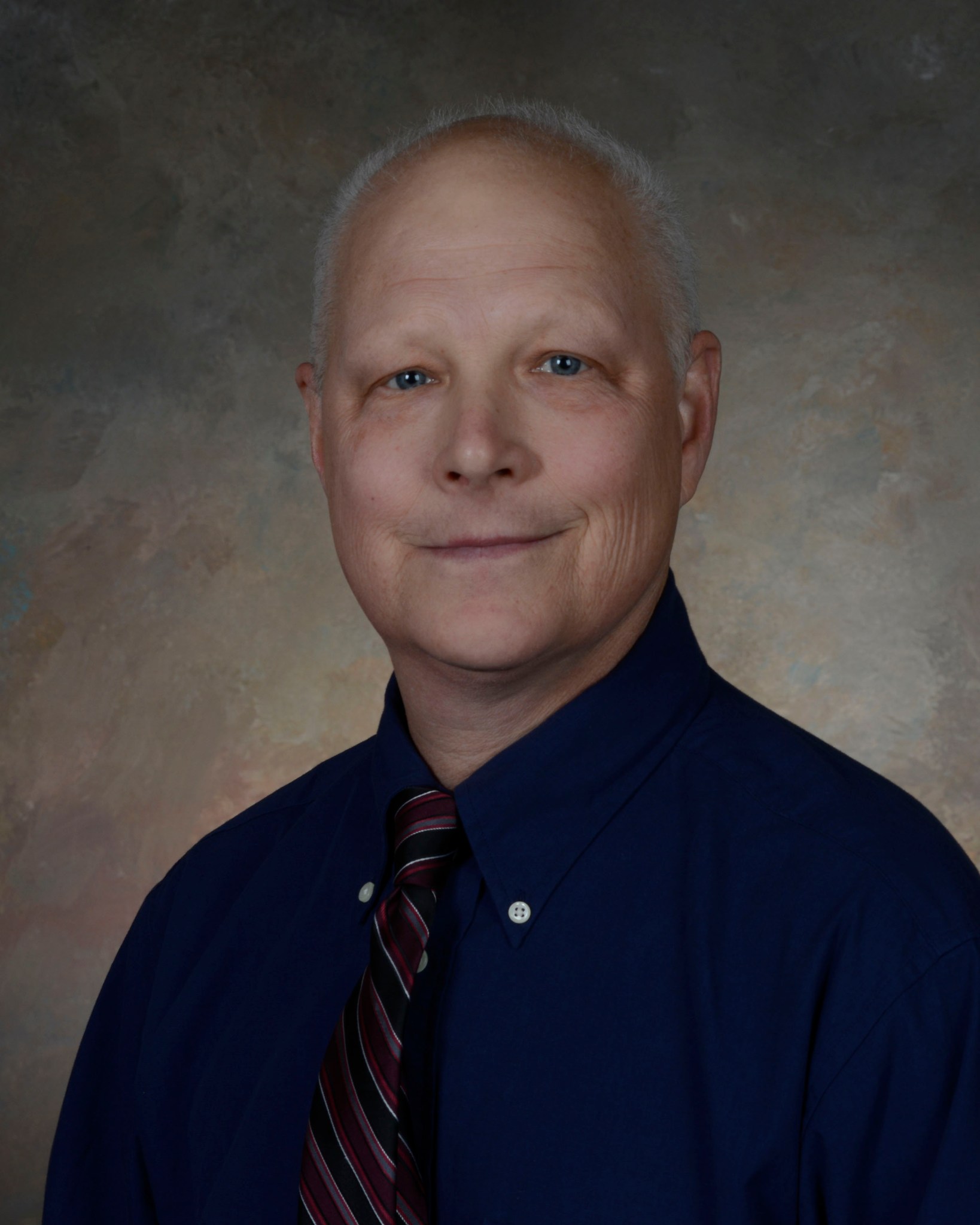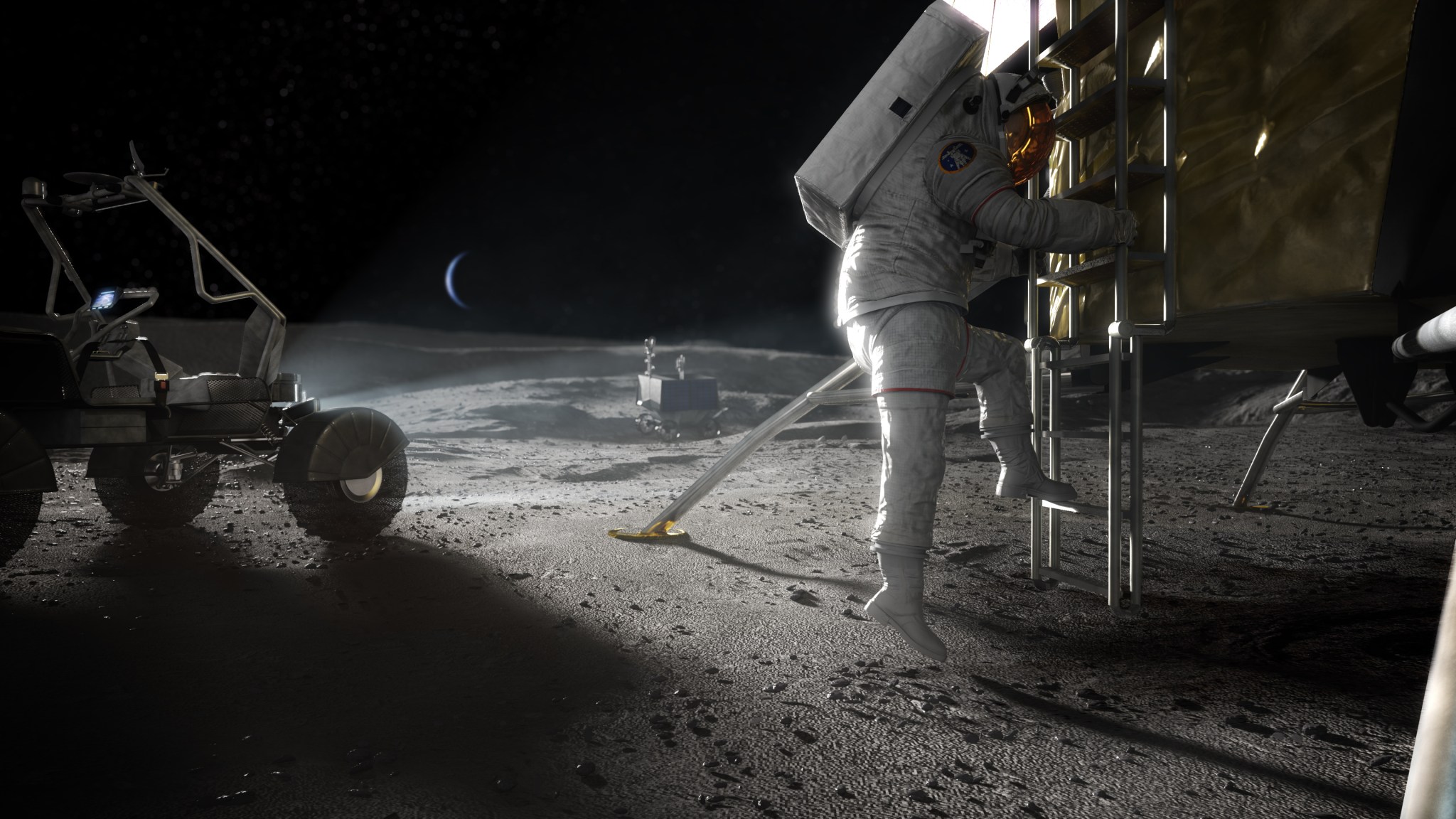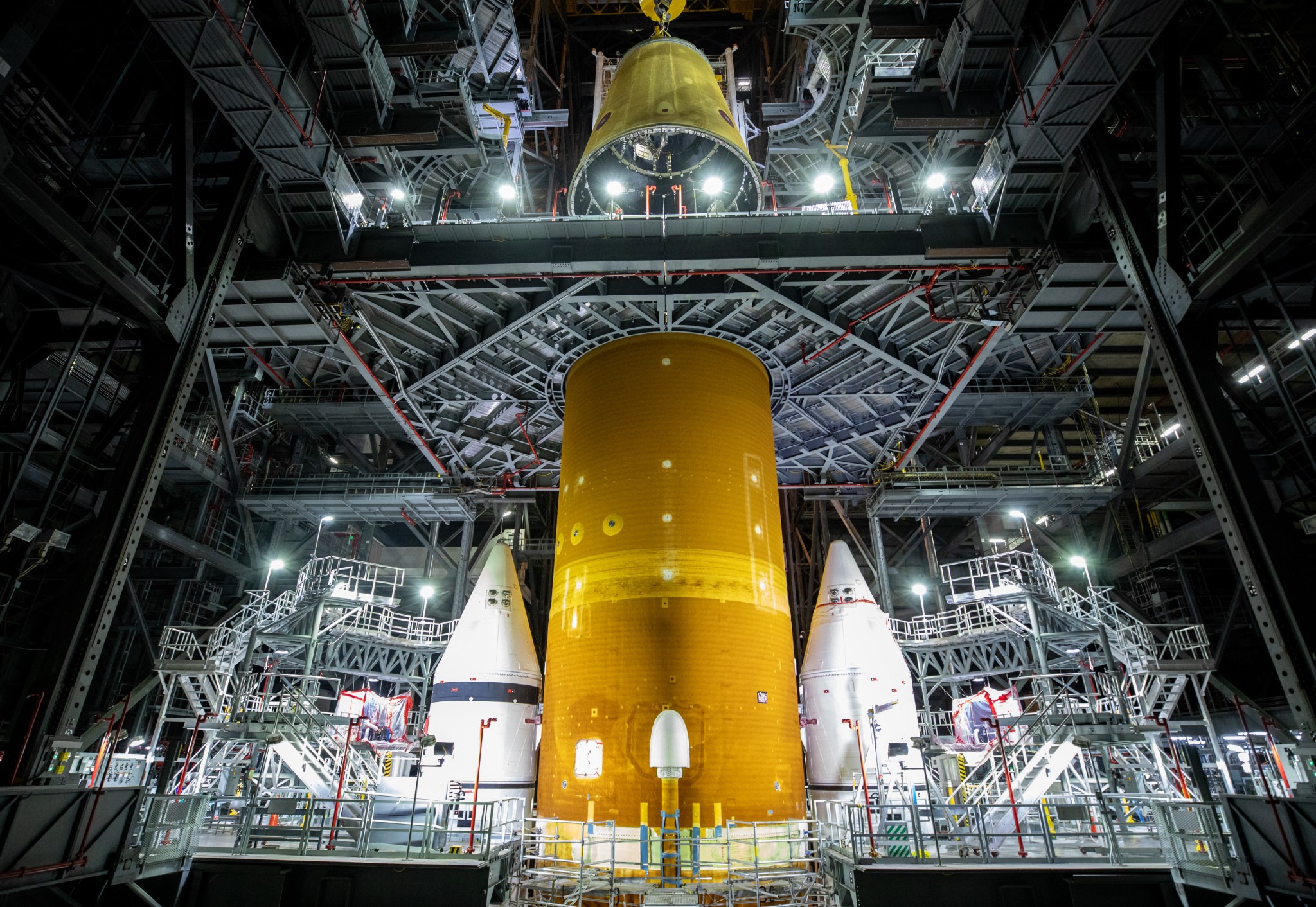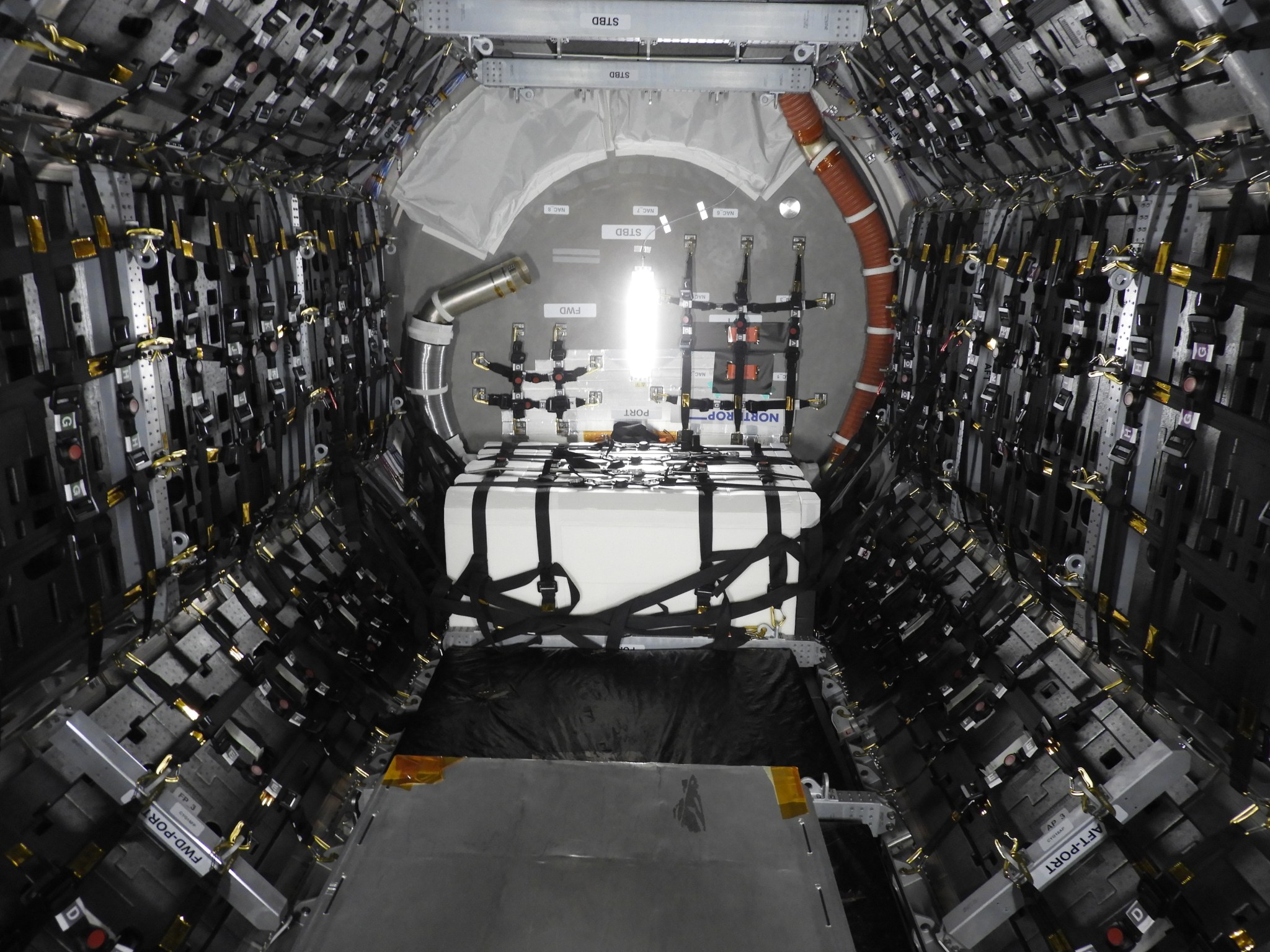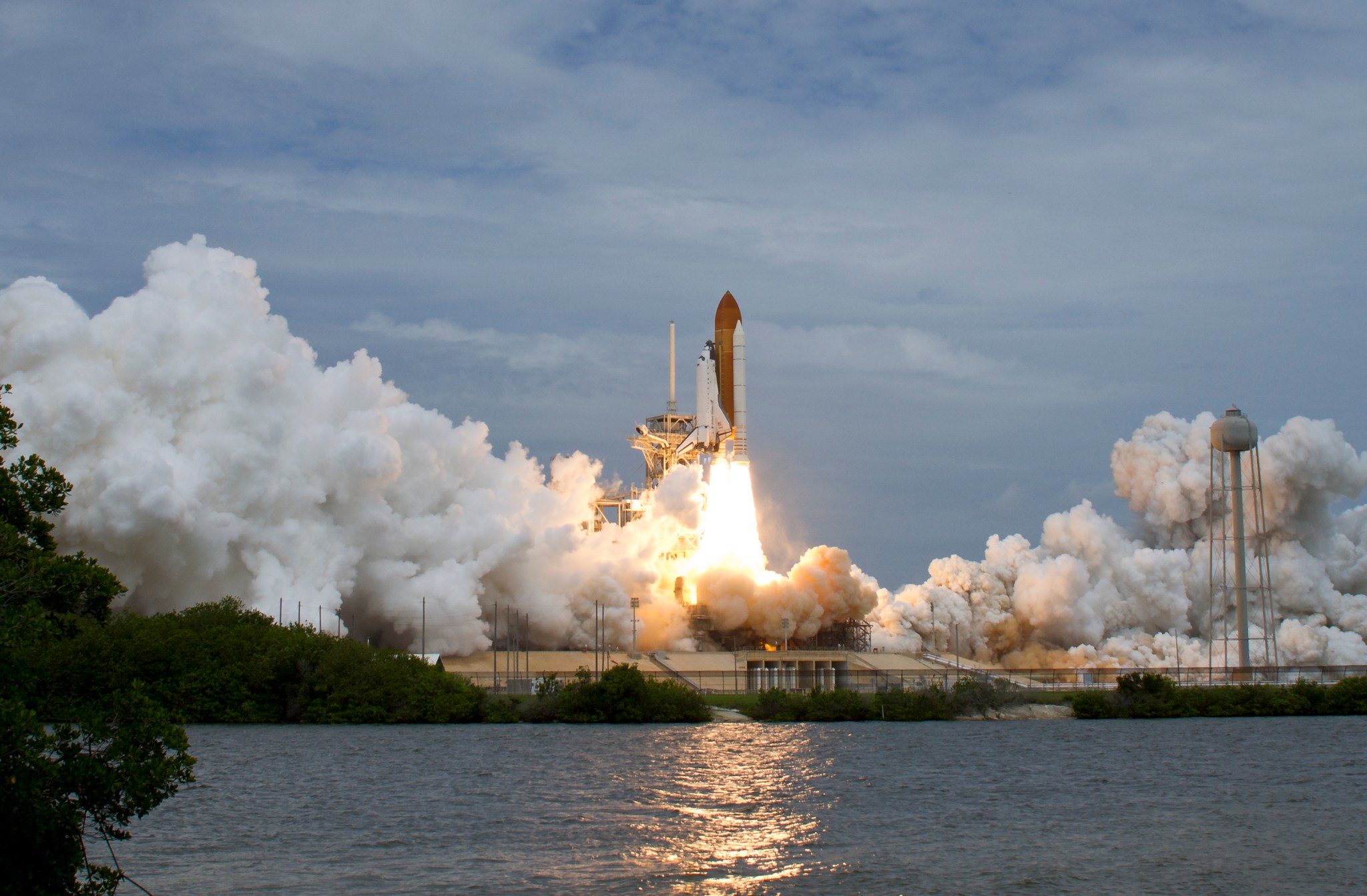Andy Schorr Named Manager of Spacecraft/Payload Integration and Evolution Office
Andy Schorr has been named manager of the Spacecraft/Payload Integration and Evolution Office in the Space Launch System Program Office at NASA’s Marshall Space Flight Center, pending approval by the Office of Personnel Management.
Schorr is responsible for development and qualification of the in-space stage, launch vehicle adapters, and secondary payload interfaces on the SLS Block 1 vehicle and a universal adapter and payload adapter for the Block 1B vehicle configuration.
Schorr became assistant manager of the integration and evolution office in 2013 and deputy manager in 2017, responsible for managing development and qualification of the launch vehicle stage adapter, Orion stage adapter, Interim Cryogenic Propulsion Stage hardware components, and SLS payload integration.
His previous positions included manager of the Propellant/Liner/Castable Inhibitor Subsystem, lead for Postflight Assessment, and technical assistant for the space shuttle Redesigned Solid Rocket Motor. As the Constellation program was initiated in 2005, Schorr was selected as lead for design and development of the shuttle-derived five-segment motor, which later was utilized as a key component of the SLS vehicle architecture.
Schorr joined NASA in 1991 as a member of the Redesigned Solid Rocket Motor Chief Engineer’s Office at Marshall.
Prior to his NASA career, Schorr was a propulsion engineer at Martin Marietta in Denver, supporting development of propellant ground support systems for the space launch site at Vandenberg Air Force Base in California, and later as a member of Return to Flight efforts following the Challenger accident.
Schorr holds a bachelor’s degree in mechanical engineering from Southern Illinois University in Carbondale. He has received numerous awards, including a Silver Snoopy, Silver Achievement Medal, and Exceptional Achievement Medal. A native of Sparta, Illinois, Schorr and his wife, Stacy, reside in Madison. They have two adult daughters, Erika and Rachele, both of whom live in Alabama.
NASA Offers $45M to Solve Risks for Astronaut Moon Landing Services
NASA is preparing to establish a regular cadence of trips to the Moon under Artemis. To help the agency fine-tune its approach, NASA will award firm fixed-price, milestone-based contracts of up to $45 million for commercial-led work under a broad agency announcement released July 1.
NASA is seeking new work to mature designs and conduct technology and engineering risk-reduction tasks for the human landing system, which will ferry Artemis astronauts from lunar orbit to the surface and back. Prior to opening the call for commercial space lunar transportation on a recurring basis, NASA is asking U.S. companies to hone HLS concepts and safety measures.
Companies awarded work under this research and development procurement, known as NextSTEP-2 Appendix N, will help NASA polish requirements for the future recurring services solicitation, which will secure regular crewed trips from Gateway in lunar orbit to the lunar surface and back.
“We are priming U.S. industry to become reliable service providers in the lunar marketplace,” said Greg Chavers, assistant deputy for Systems Engineering and Integration for human spaceflight at NASA Headquarters. “Riding on American ingenuity, Artemis astronauts will explore new areas of the Moon, where we will unlock mysteries of the solar system for the benefit of all.”
NASA’s goal is to enable the safest and lowest cost long-term approach to accessing the lunar surface, and to be just one of multiple customers purchasing services in the lunar transportation market.
“The approach for recurring Moon landing services is truly a collective effort between NASA and U.S. Industry,” said Lisa Watson-Morgan, human landing system program manager at NASA’s Marshall Space Flight Center. “This announcement is a chance for the pioneering private sector to claim their stake in the emerging lunar economy and make history with NASA.”
Early engagement allows companies to continue the development of their sustainable HLS concepts, provides an opportunity for new companies to enter the competitive lunar marketplace, and gives them access to NASA experts. This is an opportunity distinct from the initial crewed lunar landing demonstration mission, which will serve as proof of concept for the Artemis lunar landing architecture.
“Landing humans on the Moon – and achieving a resilient presence there – is no small feat. Lunar landers are a major piece needed to set Artemis in motion toward that goal,” said Kathy Lueders, NASA’s associate administrator for Human Exploration and Operations. “We are another step closer to proving, once again, that NASA is a global leader in space exploration. Our presence at the Moon will inspire the next generation of diverse scientists, engineers, and explorers to take even greater leaps.”
In addition to soliciting design studies and risk-reduction activities, the Appendix N Broad Agency Announcement seeks industry feedback on sustaining HLS requirements, as well as safety and mission assurance, design and construction, and health and medical standards. NASA expects to award HLS Appendix N contracts before the end of the calendar year, and then to seek proposals for repeatable HLS services in 2022.
Artemis missions will include sending a suite of new science instruments and technology demonstrations to study the Moon, landing the first woman and first person of color on the lunar surface, and establishing a long-term presence. The agency will leverage its Artemis experience and technologies to prepare for humanity’s next giant leap – sending astronauts on a two-year round trip to Mars and back.
Marshall-Built Moon Rocket Adapters Progress Through Stacking, Assembly
The launch vehicle stage adapters of NASA’s Space Launch System rocket for the Artemis I, left, and Artemis II lunar missions continue to progress through assembly and integration. Crews with NASA’s Exploration Ground Systems and contractor Jacobs stacked the launch vehicle stage adapter atop the core stage June 22 at the agency’s Kennedy Space Center for the Artemis I mission, the first integrated flight test of SLS and NASA’s Orion spacecraft. The 30-foot-tall, cone-shaped piece of hardware connects the SLS rocket’s upper and lower propulsion stages. The adapter also houses the RL10 engine that powers the Interim Cryogenic Propulsion Stage that will send Orion on a precise trajectory to the Moon. Meanwhile, teams at NASA’s Marshall Space Flight Center recently completed welding of the launch vehicle stage adapter for Artemis II, the first flight with astronauts. Teams moved the Artemis II launch vehicle stage adapter to another area of the Marshall facility to finish outfitting and assembly. The LVSA flight hardware is produced exclusively at Marshall by Teledyne Brown Engineering in Huntsville. With Artemis, NASA will land the first woman and the first person of color on the Moon in preparation for missions to Mars. SLS and Orion, along with the commercial human landing system and the Gateway in orbit around the Moon, are NASA’s backbone for deep space exploration. SLS is the only rocket that can send Orion, astronauts, and supplies to the Moon in a single mission. (NASA)
Rocket Science in 60 Seconds: Insulating NASA’s Moon Rocket
Amy Buck, an engineer for NASA’s Space Launch System Program at the agency’s Marshall Space Flight Center, explains what the launch vehicle stage adapter is for the SLS rocket and how the thermal protection system protects the adapter and other rocket elements from extreme forces and temperatures during launch and flight. Note: This video was originally produced and published in February 2018 when foam was being applied to the launch vehicle stage adapter for Artemis I. Engineers are currently manufacturing hardware for NASA’s Artemis II and III missions, the first crewed missions of the Artemis program. (NASA)
New Marshall-Built Air Filtration Technology Packed, Ready for Late Summer Launch
A new air filtration technology developed, built, and tested at NASA’s Marshall Space Flight Center, is packed inside the Northrop Grumman Cygnus rocket set to launch to the International Space Station later this summer from the agency’s Wallops Flight Facility. The hardware, known as the 4-Bed Carbon Dioxide Scrubber, will demonstrate advanced life support system capabilities that could help future explorers on the Moon and Mars breathe easier. The scrubber is a next-generation Environmental Control and Life Support System technology set to be tested on the space station for one year, helping recycle and regenerate most of the air and water necessary to sustain its crew – and proving advanced regenerative technology solutions for upcoming Artemis missions to the Moon and eventual human excursions to Mars. The new hardware is roughly the size of a dorm refrigerator and weighs approximately 450 pounds. Its operation and technology demonstration will be overseen in orbit by mission controllers at NASA’s Johnson Space Center, with continuing contributions by Marshall space station hardware engineers. (Northrop Grumman)
The Give and Take of Mega-Flares From Stars
The long relationships between stars and the planets around them – including the Sun and the Earth – may be even more complex than previously thought. This is one conclusion of a new study involving thousands of stars using NASA’s Chandra X-ray Observatory.
By conducting the largest survey ever of star-forming regions in X-rays, a team of researchers has helped outline the link between very powerful flares, or outbursts, from youthful stars, and the impact they could have on planets in orbit.
“Our work tells us how the Sun may have behaved and affected the young Earth billions of years ago,” said Kostantin Getman of Penn State University in State College, Pennsylvania, who led the study. “In some ways, this is our ultimate origin story: how the Earth and Solar System came to be.”
The scientists examined Chandra’s X-ray data of more than 24,000 stars in 40 regions where stars are forming. They captured over a thousand stars that gave off flares that are vastly more energetic than the most powerful flare ever observed by modern astronomers on the Sun, the “Solar Carrington Event” in 1859. “Super” flares are at least 100,000 times more energetic than the Carrington Event and “mega” flares up to 10 million times more energetic.
These powerful flares observed by Chandra in this work occur in all of the star-forming regions and among young stars of all different masses, including those similar to the Sun. They are also seen at all different stages in the evolution of young stars, ranging from early stages when the star is heavily embedded in dust and gas and surrounded by a large planet-forming disk, to later stages when planets would have formed and the disks are gone. The stars in the study have ages estimated to be less than 5 million years, compared to the Sun’s age of 4 1/2 billion years.
The team found several super-flares occur per week for each young star, averaged over the whole sample, and about two mega-flares every year.
“We want to know what kinds of impact – good and bad – these flares have on the early lives of planets,” said co-author Eric Feigelson, also of Penn State. “Flares this powerful can have major implications.”
Over the past two decades, scientists have argued that these giant flares can help “give” planets to still-forming stars by driving gas away from disks of material that surround them. This can trigger the formation of pebbles and other small rocky material that is a crucial step for planets to form.
On the other hand, these flares may “take away” from planets that have already formed by blasting any atmospheres with powerful radiation, possibly resulting in their complete evaporation and destruction in less than five million years.
The researchers also performed detailed modeling of 55 bright super- and mega-flares and found that most of them resemble long-lasting flares seen on the Sun that produce coronal mass ejections, powerful ejections of charged particles that can damage planetary atmospheres. The Solar Carrington Event involved such an ejection.
This work is also important for understanding the flares themselves. The team found that the properties of the flares, such as their brightness and frequency, are the same for young stars with and without planet-forming disks. This implies that the flares are likely similar to those seen on the Sun, with loops of magnetic field having both footprints on the surface of the star, rather than one anchored to the disk and one to the star.
“We’ve found that these giant flares are like ones on the Sun but are just greatly magnified in energy and frequency, and the size of their magnetic loops,” said co-author Gordon Garmire from the Huntingdon Institute for X-ray Astronomy in Huntingdon, Pennsylvania. “Understanding these stellar outbursts may help us understand the most powerful flares and coronal mass ejections from the Sun.”
This work was presented at the recent meeting of the American Astronomical Society and is described in a paper led by Getman that was accepted for publication in The Astrophysical Journal, and is available here. NASA’s Marshall Space Flight Center manages the Chandra program. The Smithsonian Astrophysical Observatory’s Chandra X-ray Center controls science from Cambridge, Massachusetts, and flight operations from Burlington, Massachusetts.
Other materials about the findings are available at here. For more Chandra images, multimedia and related materials, visit here.
Scientists, Researchers Gather Virtually to Plan Space Station Science
Erek Allen, left, a Payload Operations director, and Gina Wade, a technical trainer in the Payload Operations Integration Center at NASA’s Marshall Space Flight Center, welcome a virtual audience of scientists and engineers from around the world to the biannual Payload Operations Integration Working Group meeting June 29. The three-day event offered payload developers, investigators, and project managers the opportunity to coordinate processes and schedules and to review the status of scientific payloads currently on or soon launching to the International Space Station. More than 500 individuals registered for the event. The Payload Operations Integration Center is mission control for science on the space station. (NASA/Charles Beason)
This Week in NASA History: Final Launch of Shuttle Program – July 8, 2011
This week in 2011, space shuttle Atlantis, mission STS-135, launched from NASA’s Kennedy Space Center to the International Space Station. STS-135 carried the Raffaello multipurpose logistics module to deliver supplies, logistics, and spare parts to the orbiting lab. This was the final launch of the Space Shuttle Program. Today, the Payload Operations Integration Center at NASA’s Marshall Space Flight Center serves as “science central” for the space station, working 24/7, 365 days a year in support of the orbiting laboratory’s science experiments. After 20 years of continuous human presence, the space station remains the sole space-based proving ground and stepping stone toward achieving the goals of the Artemis program. The NASA History Program is responsible for generating, disseminating, and preserving NASA’s remarkable history and providing a comprehensive understanding of the institutional, cultural, social, political, economic, technological, and scientific aspects of NASA’s activities in aeronautics and space. For more pictures like this one and to connect to NASA’s history, visit the Marshall History Program’s webpage. (NASA)


























